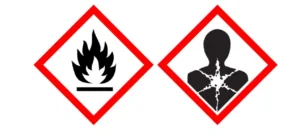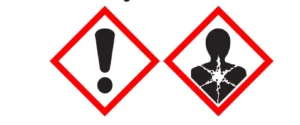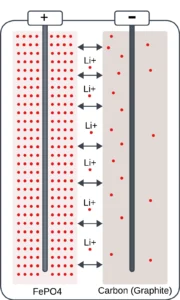Lithium iron phosphate batteries are among the world’s trendy rechargeable batteries. They are primarily famous for safety and capacity. Even a tiny battery can offer high ampere ratings, and its long life makes it suitable for many uses.
However, you may face different hazards if you don’t handle batteries carefully. Fire, chemical, gassing, and burn are some common hazards. This article is about these hazards and their prevention. It can help people who handle batteries daily, including importers, suppliers, retailers, and wholesalers.
What is a Lithium Phosphate Battery?
A lithium iron phosphate (LiFePO4) battery is a common type of rechargeable battery. People also know it as a lithium phosphate battery. It uses phosphorous, lithium, and iron to create a stable and safe storage system.
If you observe the structure of this battery, you will find two common layers. The positive side is connected to the aluminum foil. Around this electrode, the iron phosphate (FePO4) particles go all the way around. On the other hand, the negative side is connected to the copper electrode. Around this electrode, the graphite particles go all the way around.
A special structure is used around this mechanism. It mainly saves the battery from overheating.
Lithium iron phosphate batteries are widely used in solar, electric vehicles, and backup power systems. The battery’s C rating is 1C, which means it can be charged and discharged at an equal rate. For example, a 100Ah battery can be charged and discharged at a maximum of 100 A.
Are Lithium Iron Phosphate Batteries Safe?
Lithium Iron Phosphate Batteries are safe until they offer safety features. A good brand always ensures that these features are present in their product. Indeed, these features are necessary for safety and long-lasting services.
What features must be present in the batteries? Thermal and chemical stability, built-in circuit safety, and fireproofing are crucial. If a battery comes with these features, it can offer long-lasting life.
Is Lithium Battery Toxic to Humans?
Lithium and phosphorous are the main ingredients of LiFePO4 batteries. Lithium, in this case, is highly reactive and harmful if inhaled or ingested. In batteries, lithium is a part of the solid compound.
On the other hand, phosphorous is also harmful to human bodies. But in batteries, it is also used in a stable form. Therefore, both lithium and phosphorous are less prone to create reactivity and toxicity.
However, a common issue that might happen with the LiFePO4 battery is called off-gassing. The best thing about the LiFePO4 battery is its chemical stability. Unless the battery is damaged, the gas cannot typically form. If damaged, the off-gassing hexafluorophosphate may be exposed. This gas harms our human bodies, especially our respiratory tracts.
Lithium Iron Phosphate Fire Hazards
Lithium phosphate batteries are trendy for their safety features. However, they are not entirely free from fire risks. The common question is, can LiFePO4 batteries catch fire? The answer is yes, but it is rare.
LiFePO4 battery fire risk is relatively lower than that of other types of lithium-ion batteries. They barely overheat and catch fire. If you handle them properly, you can reduce this risk even more.
Chemical Burns
Chemical burns occur when the skin or eyes come into contact with harmful chemicals. They can cause pain, redness, and damage to the skin. Although first aid is usually enough, immediate treatment may be necessary.
A lithium iron phosphate battery uses organic electrolytes. Recent batteries commonly use anhydrous organics, such as EC/DMC, PC/DMC, or DEC.
Chemical burns may happen for many reasons. (1) Whether your battery is defective or has faced external damage. (2) Improper handling may lead to chemical burns. (3) Overcharging or short circuits may overheat the battery, causing expansion. Eventually, it allows chemicals to come outside. (4) Physical damage can also be responsible for this.
Misuse with Devices
When misused, lithium iron phosphate batteries can cause some major issues. When you overcharge, heat can build up and finally catch fire. Also, if you use the wrong charger, the device can overheat. Moreover, external damage to the material can lead to leaks. Furthermore, putting the battery in extreme heat can also reduce its lifespan.
If you don’t use the battery right, it could swell, leak, or even catch fire. If you don’t place things correctly, they can short-circuit. Always do what the maker tells you to do.
Understanding Lithium Iron Phosphate SDS
SDS stands for safety data sheet. The lithium iron phosphate SDS provides essential safety information. Moreover, you can find brands, factories, and other relevant information.
#1 Brand and Product Identification
Lithium iron phosphate SDS first includes the brand and product information. Shortly, this product is also known as the LiFePO4 battery. It is used for electric storage. The manufacturer info may vary.
#2 Identify Hazard and Prevention
The lithium iron phosphate SDS also discusses possible hazards and their prevention. Fire, chemical burns, and toxic gases are some typical hazards. In this section, you’ll learn how to prevent them.

Prevention #1 Fire, Carcinogen Chemicals and Toxic Gases
Most lithium phosphate batteries contain toxins. If not handled with care, they may create off-gassing, which is bad for human bodies. These batteries also get hot when overcharging. In addition, the chemical may burn your skin and induce diseases when inhaled. Therefore, you must follow the expert’s guidelines.
- Make sure your device has auto-charging capabilities. Lux Power TEK hybrid inverters always come with intelligent charging and discharging features.
- You must ensure the battery is cool and is in a safe place, especially when charging.
- Experts always recommend you wear safety gear when handling batteries.
- Do not forget to wear masks to prevent toxic gas inhalation.
- Every time you deal with batteries, wash your hands.
- While storing, maintain an air gap between stacks or pallets.

Prevention #2 Skin Burn, Toxicity, and Irritation of the Respiratory Tract
The gas and chemicals in batteries are harmful. They can burn your skin and hurt your throats. Therefore, when working with these batteries, wear safety masks. FYI: You can not use typical masks since gas can pass through them. Also, you must work outdoors. If it is not possible for you, work in a well-ventilated area.
Lithium iron phosphate batteries have organic chemicals as electrolytes. If you do not handle these batteries with care, this chemical may come out. Note that these chemicals produce gas when they touch water. People call this process off-gassing. Therefore, you must choose a place that doesn’t allow water or moisture.
#3 Material Composition
A lithium phosphate battery is composed of various materials. Here, ferrous phosphate lithium is the main ingredient, about 38.09%. The next highest quantity used in these batteries is graphite, which is 20.10%. The battery also contains copper 9.22%, aluminum 4%, phosphate ions 1.1%, and other minorities.
#4 First Aid Measures
Nevertheless, what will you do if you still face the abovementioned hazards? In this case, there are some first-aid measures that you can follow.
- If the off-gassing or chemical touches your eye, flush your eye with plenty of water. Hold your eyelids open, and then flush your eyes. If you still feel irritated, seek medical assistance.
- For skin contact issues, first remove your clothes and shoes. Then, immediately wash it with water and soap. Also, get a bath with good soap and wash your hair. If you still feel uncomfortable, seek medical assistance.
- If you have inhaled the off-gassing, come out from the exposed area. Then, try inhaling artificial oxygen. If you feel breathing is difficult, seek medical assistance.
- For other severe issues, you must seek medical attention.
#5 LiFePO4 Battery Fire Resisting Techniques
What if the battery has already caught fire? First, use an appropriate extinguishing agent, such as dry powder and CO2. The firefighters must wear supplied air respirators (SCBA) and fireproof cloths.
#6 Accidental release measures
A sudden impact or accident may cause an accidental release from lithium phosphate batteries. First, remove the ignition source and then evacuate the area. Clean everything up by sweeping without creating dust. Ensure the material does not enter sewers, ditches, or water bodies.
Final Thought
Lithium iron phosphate is one of the safest batteries on the market. It is more reliable than lead-acid batteries. LiFePO4 batteries are the best choice for most modern power sources. However, the company that makes them must ensure their safety measures work. If they don’t, the chemicals used in the battery could flare up and cause fires.
The chemicals used in these batteries may create harmful gas when in contact with water. The off-gassing is not suitable for your respiratory tract. Therefore, they should work outdoors or in a well-ventilated area.
On the other hand, the LiFePO4 fire risk is also critical. It is a self-heating product, so that it can catch fire. Therefore, when handling these batteries, always do so with caution. Please keep it away from kids and pets.
Once again, a lithium-phosphate battery is one of the safest batteries in the world. It won’t hurt you until you open it. However, if you need to open or handle it for storage, you must follow some measures.
If you still need some assistance, feel free to contact our customer support team. Lux Power Tek experts are among the world’s best solar and battery experts. We hope you can get a reliable answer from them.


